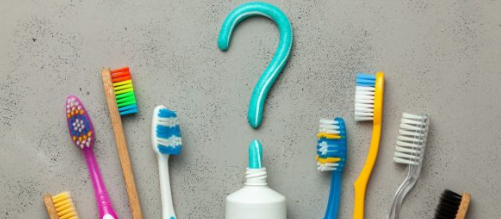Discover Simple Ways to Select a Toothbrush That Suits Your Needs
Brushing your teeth is a vital step in maintaining oral health, but the wide range of toothbrush choices can make the selection process feel overwhelming. This guide highlights a few practical points to help you pick a toothbrush that aligns well with your daily habits and personal comfort
1. Manual vs. Electric Toothbrushes
Your initial decision is choosing between a manual toothbrush and an electric one.
Manual Advantages: Easy to find, budget-friendly, and usable anytime without batteries or charging.
Manual Drawbacks: You’ll need to apply consistent technique to get a thorough clean, and results can vary.
Electric Advantages: Often provides more consistent cleaning power, especially helpful for people with limited hand mobility or those wearing orthodontic appliances.
Electric Drawbacks: Higher upfront cost, requires charging, and replacement heads can increase overall expenses.
Key Point: Pick the type that suits your comfort, lifestyle, and dental conditions.
2. Bristle Hardness
The texture of the bristles greatly influences your brushing experience.
Soft Bristles: Commonly recommended by dentists because they are gentle on gums and enamel.
Medium Bristles: Clean effectively but may cause irritation if used with heavy pressure.
Hard Bristles: Generally not suggested for routine use since they may contribute to gum recession and enamel wear.
Tip: If you have sensitive gums or enamel issues, consider extra-soft options.
Maintenance: Replace your toothbrush every few months—or sooner if the bristles start to flare.
3. Brush Head Size and Shape
The head of the toothbrush should fit comfortably in your mouth and reach all corners.
For Adults: A compact head usually allows better access to tight spots.
For Children: Smaller heads designed for young users help them brush effectively.
Shape Options: Circular, rectangular, or slim-tapered heads are available; choose one that feels natural and reaches your molars easily.
Practical Note: Brushes with angled or tapered heads can help clean hard-to-reach areas.
Bottom Line: A brush that fits your mouth and feels comfortable will encourage consistent use.
4. Handle Design
A well-designed handle can make brushing smoother and more controlled.
Grip Features: Non-slip textures are useful for people who struggle with grip strength.
Length: Pick a handle that allows you to maneuver comfortably around all tooth surfaces.
Flexibility: Some brushes offer flexible necks to help ease brushing pressure.
Aesthetic Appeal: A design that catches your eye might motivate you to maintain your brushing routine.
Electric Models: Look for ergonomic handles that sit comfortably in your hand.
5. Extra Features
Some toothbrushes include additional elements to improve your brushing habits.
Tongue Cleaners: Built into the back of some brush heads.
Indicator Bristles: Fade in color to show when it’s time for a replacement.
Timers: Common in electric models to guide you toward brushing for about two minutes.
Pressure Sensors: Helpful for avoiding excessive force.
Multiple Modes: Certain electric brushes offer specialized settings like sensitive, polishing, or gum-friendly modes.
Final Thoughts
Choosing the right toothbrush plays an important role in daily oral care. Whether you prefer a manual or electric model, the ideal option is one you’ll use regularly and correctly. As your dental needs evolve, feel free to reassess your choice and consult your dentist for updated advice.
https://www.amazon.co.jp/-/en/gp/bestsellers/hpc/10509661051
https://emmi-dent.com/collections/ultrasonic-toothbrushes
